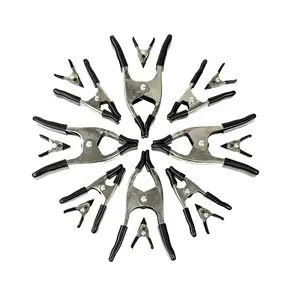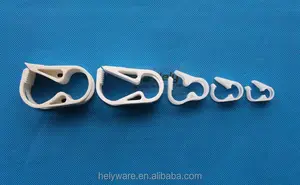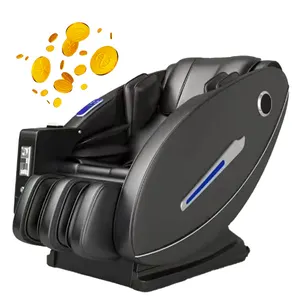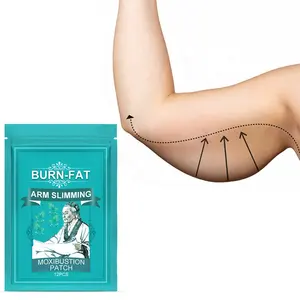Beliebt in Ihrer Branche






Holzgriff verzinkter Kohlenstoffs tahl Zimmermann Tisch werkzeug Holz Holz bearbeitungs stangen klemme F Klemme
0,8279 € - 5,05 €
Mindestbestellmenge: 10 Stück







Hydraulische Doppel-Kunststoff-Metall-Hoch leistungs zange aus Edelstahl zur Herstellung von Maschinen schlauch klemmen
0,0187 € - 0,0745 €
Mindestbestellmenge: 10 Stück




Schwarzes Finish Nylon Zimmermann Tisch werkzeug Schnell verschluss Holz Holz bearbeitungs stange Klemme
1,42 € - 2,60 €
Mindestbestellmenge: 10 Stück







6"/8"/10"/12"/18"/24"/36" Holzbearbeitungsstange Klemme Klammern Griff Ratsche Schnellentladung Festhauswerkzeuge Haushalt F Holzbearbeitungsklemme
0,9768 € - 4,94 €
Mindestbestellmenge: 10 Stück
Versand pro Stück: 8,59 €







Ein-Schrauben-Super-Schlauchklammern Hochdruck-Schlauchklammer verzinkter Stromerzeugungs-Feuerlöscher Rohrklammern
0,0931 € - 0,1396 €
Mindestbestellmenge: 1000 Stück
Versand pro Stück: 4,70 €







Federklemmen Holz bearbeitungs werkzeuge Kunststoff-Nylon klemmen eine Form Federklemme Aufhänger Karte/Plastiktüte Zoll Standard
Sofort lieferbar
0,2791 € - 0,6977 €
Mindestbestellmenge: 50 Stück
Versand pro Stück: 0,7721 €






Plastic Spring Clamp A Clamp
Sofort lieferbar
0,2698 € - 0,921 €
Mindestbestellmenge: 5 Stück
Versand pro Stück: 6,79 €






NLD Fabrik preis Hochwertiges DIY-Werkzeug 2 ''6" Hochleistungs-Metalls tahl A Typ Federklemme
0,214 € - 0,2791 €
Mindestbestellmenge: 500 Stück






4-Zoll-Porzellanlieferanten Ein Typ Federklemmen Elektro werkzeuge Holz bearbeitungs klemme Stahlfeder klemme
Sofort lieferbar
0,4652 € - 0,5396 €
Mindestbestellmenge: 240 Stück
Versand pro Stück: 0,1861 €






Holz bearbeitungs klemme 4 6 9 Zoll Kunststoff Nylon Federklemmen Clip A Typ
Sofort lieferbar
1,05 € - 1,85 €
Mindestbestellmenge: 1 Stück
Versand pro Stück: 8,18 €






Werkspreis starker Kunststoff-A-Linienklip Holzbearbeitungsclamp schnelle Befestigung A-Typ-Federklemme
0,1117 € - 0,1861 €
Mindestbestellmenge: 2 Sätze
Versand pro Stück: 22,08 €






Hochleistungs-Metall feder klemme vom Typ A für Holz bearbeitung und Hintergründe
0,1396 €
Mindestbestellmenge: 1000 Stück






Schnelle Installation Clamps professionelle Herstellung Bühnenbeleuchtungsausrüstung viel Aluminium schwarz Bühnenlichthaken
8,38 € - 11,63 €
Mindestbestellmenge: 10 Stück
Versand pro Stück: 6,35 €






Großhandels fabrik 2-4-6-9 Zoll Eisen metall klemme Eine Klemm feder klemme ist für Camping zelte im Freien geeignet.
1,07 € - 1,45 €
Mindestbestellmenge: 20 Stück






4-Zoll-starker Kunststoff A-Linie Clip Holz bearbeitungs klemme Schnell befestigung A Typ Federklemme
0,1117 € - 0,1582 €
Mindestbestellmenge: 500 Stück



LXD Heavy Duty Custom 2 Zoll A Typ Edelstahl Federklemme Metall Federklemmen
0,4652 € - 0,6512 €
Mindestbestellmenge: 100 Stück






SS 304 Edelstahl amerikanische Schlauchklammern 6mm-400mm einstellbarer Clip 12mm Bandbreite Zebra-Schneckenverschluss Schlauchklammer
0,0466 € - 0,5117 €
Mindestbestellmenge: 100 Stück






Bestseller Nylons eil klemmen mit CE & ISO
Sofort lieferbar
0,4652 €
Mindestbestellmenge: 1 Stück
Versand pro Stück: 6,46 €






Doppel ohr Metallrohr klemme aus verzinktem Stahl/Edelstahl Doppel ohr schlauch klemme Doppel ohr klemme
0,0466 € - 0,0559 €
Mindestbestellmenge: 10 Stück






Hoch leistungs kraftstoff Ein Rohr Feder pex 16mm Knochen klemme Ein flügel mutter Rohr klemme Metall Edelstahl rohr Stahl ohr schlauch klemme
0,0094 €
Mindestbestellmenge: 10 Stück






Schlauchs chellen Edelstahl Neues Produkt Industrial Automotive Einstellbarer Typ Starke 201/304 Stahl Zoll Schlauch klemme
0,0466 € - 0,0745 €
Mindestbestellmenge: 1 Stück






Große menge 20-250mm pp/ppr sattel klemme schlauch klemme für ganze verkauf
0,0187 €
Mindestbestellmenge: 1 Stück






Bis zu 18mm große kunststoff schlauch clip schläuche Robert clamp rohr siphon abgeschaltet flow control prise klemme
0,0187 € - 0,3256 €
Mindestbestellmenge: 300 Stück






Zweiteilige Rohrs chellen aus Edelstahl Hydraulische Doppelschnecken-Rohrs chell verbinder Industrielle Rohr halterung 1 ''Standard
0,4652 € - 4,66 €
Mindestbestellmenge: 10 Stück






Edelstahl T Bolzen Schlauch Klemme
Sofort lieferbar
0,2791 € - 0,4186 €
Mindestbestellmenge: 10 Stück
Versand pro Stück: 4,42 €






HS-40323 halten kapazität 163kg/360Lb stahl toggle clamp quick release hand clamp latch clamp weld Ähnliche zu 323
0,7907 € - 0,9768 €
Mindestbestellmenge: 10 Stück
Versand pro Stück: 2,22 €






Werksverzinkter Galvanisches Stahl-Federungsspannweite-Klemme D Schleifdraht-Kabelklemme mit Pol-Leiste-Hardware
0,1396 € - 0,1861 €
Mindestbestellmenge: 5000 Stück
Versand pro Stück: 0,8465 €

AJJ -07 Klemme
Sofort lieferbar
13,96 € - 14,89 €
Mindestbestellmenge: 1 Stück
Versand pro Stück: 16,98 €






Angepasst Einstellbar verzinkt Amerikanischen typ Schlauch Klemme aus China
0,0094 €
Mindestbestellmenge: 3 Boxen






nullgrad schwarz wandmontage duschraum messing verstellbar glas zu glas halter schraubefestigung spiegel glasklemme
1,71 € - 1,77 €
Mindestbestellmenge: 100 Stück
Versand pro Stück: 1,68 €






klemmen für die holzbearbeitung 1/2 zoll schnellverschluss holzbearbeitung rohrschnalle holzbearbeitungswerkzeuge
Sofort lieferbar
2,52 € - 2,80 €
Mindestbestellmenge: 20 Stück
Versand pro Stück: 2,40 €





Leichte F-Klemme aus geschmiedetem Holz mit hohem Kohlenstoffs tahl
Sofort lieferbar
4,56 € - 4,66 €
Mindestbestellmenge: 300 Stück
Versand pro Stück: 1,33 €






2 3 3.5 4 6 9 zoll Professional Photography Wood Working A form Nylon Plastic Backdrop Clips Spring Clamps
Sofort lieferbar
0,1117 € - 0,4186 €
Mindestbestellmenge: 10 Stück
Versand pro Stück: 2,33 €





Jiedeli Handwerkzeug Hardware Schnell verschluss Griff vertikale Knebel klemme GH-12130
1,57 € - 1,87 €
Mindestbestellmenge: 100 Stück






Edelstahl draht feder klemme Wasser rohrclip Schlauch klemme
0,0373 € - 0,0745 €
Mindestbestellmenge: 1000 Stück
Versand pro Stück: 0,0466 €






Drawer Installation Clamp Drawer Surface Stabilizer Installation Artifact 2mm 3mm Woodworking Board Stable Clamp
0,2791 € - 0,6512 €
Mindestbestellmenge: 80 Stück
Versand pro Stück: 18,53 €






Heavy Duty Hardware werkzeug Holz clamp F schellen für holzbearbeitung
Sofort lieferbar
4,66 €
Mindestbestellmenge: 1 Stück
Versand pro Stück: 15,56 €






Würmgetrieb Klemme einzelohr Schlauchclip alle 304 Rohrschnalle Edelstahl Pex-Schlauchklemme 100 Stück/Beutel
3,10 € - 5,82 €
Mindestbestellmenge: 1 Beutel
Versand pro Stück: 9,76 €






Großhandel Alle Arten von Hochleistungs-C-Klemmen für Holz bearbeitungs klemmen
0,2605 € - 2,80 €
Mindestbestellmenge: 1 Stück






Schwere 12 Zoll 60 Zoll Holzbearbeitung parallele Klemme Gelenk Klemme schnelle F-Klemme
8,52 € - 10,38 €
Mindestbestellmenge: 12 Stück
Versand pro Stück: 13,96 €
Top-Kategorien
Über ein klemmen
ein klemmen sind heutzutage für die einfachen Leute nichts Neues und gelten nicht mehr als Tabu. Wenn Sie nach diesem vorletzten Vergnügen suchen, müssen Sie sich das Unermessliche ansehen. ein klemmen Sammlung bei Alibaba.com. Diese üppigen und kurvigen. ein klemmen sind jeden Cent wert und machen die Nacht sicher zu etwas Besonderem für Sie. Diese Puppen haben in jeder Hinsicht ein lebensechtes Aussehen, angefangen von den Haaren bis zu den Zehen.
Egal, ob Sie eine einsame Person sind, die einen lebensechten Partner sucht oder ein Paar, das ihr Leben aufpeppen möchte, Sie können diese verwenden . ein klemmen zum Zünden dieses Feuers. Diese spektakulären. ein klemmen können gemäß Ihren Erwartungen angepasst werden. Diese erstaunlich. ein klemmen sind sowohl in männlicher als auch in weiblicher Version erhältlich und zur sicheren Verwendung aus medizinischem Silikon hergestellt. Holen Sie sich jetzt eine und genießen Sie eine Nacht voller Leidenschaft und Feuer.
Alibaba.com bietet diese atemberaubenden. ein klemmen in allen Körperformen, -größen und -ethnien. Was auch immer Ihre Anforderungen an die. ein klemmen können Sie alle auf der Website abrufen. Diese. ein klemmen werden von den besten Handwerkern in Form gebracht und jedes Detail wird gründlich geprüft. Diese Puppen haben Augen, Haare, Nägel und alle anderen Körperteile, die denen einer realen Person ähneln.
Alibaba.com bietet ein breites Spektrum an. ein klemmen, mit dem Sie Produkte kaufen können, die Ihrem Budget und anderen Anforderungen entsprechen. Diese Produkte sind sicher zu verwenden, zertifiziert und umweltfreundlich. OEM-Bestellungen sind für diese Produkte verfügbar.
Egal, ob Sie eine einsame Person sind, die einen lebensechten Partner sucht oder ein Paar, das ihr Leben aufpeppen möchte, Sie können diese verwenden . ein klemmen zum Zünden dieses Feuers. Diese spektakulären. ein klemmen können gemäß Ihren Erwartungen angepasst werden. Diese erstaunlich. ein klemmen sind sowohl in männlicher als auch in weiblicher Version erhältlich und zur sicheren Verwendung aus medizinischem Silikon hergestellt. Holen Sie sich jetzt eine und genießen Sie eine Nacht voller Leidenschaft und Feuer.
Alibaba.com bietet diese atemberaubenden. ein klemmen in allen Körperformen, -größen und -ethnien. Was auch immer Ihre Anforderungen an die. ein klemmen können Sie alle auf der Website abrufen. Diese. ein klemmen werden von den besten Handwerkern in Form gebracht und jedes Detail wird gründlich geprüft. Diese Puppen haben Augen, Haare, Nägel und alle anderen Körperteile, die denen einer realen Person ähneln.
Alibaba.com bietet ein breites Spektrum an. ein klemmen, mit dem Sie Produkte kaufen können, die Ihrem Budget und anderen Anforderungen entsprechen. Diese Produkte sind sicher zu verwenden, zertifiziert und umweltfreundlich. OEM-Bestellungen sind für diese Produkte verfügbar.











